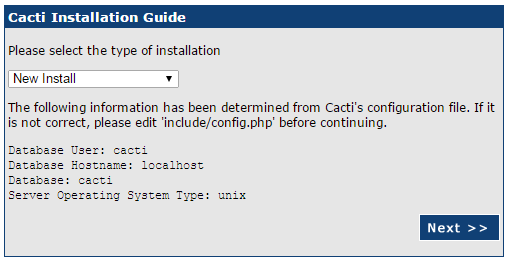

sudo mysql -u root -p mysql /dev/null 2>&1 Step 9: Cacti Dashboard Now, give the Cacti user access to the MySQL Timezone Database. GRANT ALL PRIVILEGES ON cacti.* TO PRIVILEGES CREATE DATABASE cacti ĬREATE USER IDENTIFIED BY ' Your_password' To make our work easier create with cacti name. sudo systemctl enable mysqlĬreate a database with name cacti as the demo data also contain database with cacti name.
INSTALL CACTI ON NGINX INSTALL
Sudo apt -y install php-cli php-fpm php-json php-pdo php-mysql php-zip php-gd php-mbstring php-curl php-xml php-pear php-bcmath php-gmp php-ldap Step 4: Database ConfigurationĬonfigure the database as we’ve installed it in step 2. Generally, it is used to graph time-series. Cacti enables a user to poll services at regular intervals to create graphs on resulting data using RRDtool. Cacti tool is an open source web based network monitoring and system monitoring graphing solution for IT business. Type the given command to install PHP & its required extensions sudo apt -y install php php-common Install Cacti (Network Monitoring) on RHEL/CentOS 6.3/5.8 and Fedora 17-12. Sudo apt install curl vim acl composer fping git graphviz imagemagick mariadb-client mariadb-server mtr-tiny nginx-full python-memcache python-mysqldb snmp snmpd whois php-snmp rrdtool librrds-perl Step 3: Install PHP & PHP extensions 1 sudo apt-get install snmpd After the installation we have to do a few configurations. 1 sudo apt-get install nginx Install SNMPD Service SNMPD Service is used by Cacti, so it is a required component in order Cacti to work as expected. Sudo apt install software-properties-common To install Nginx execute the command below.


 0 kommentar(er)
0 kommentar(er)
